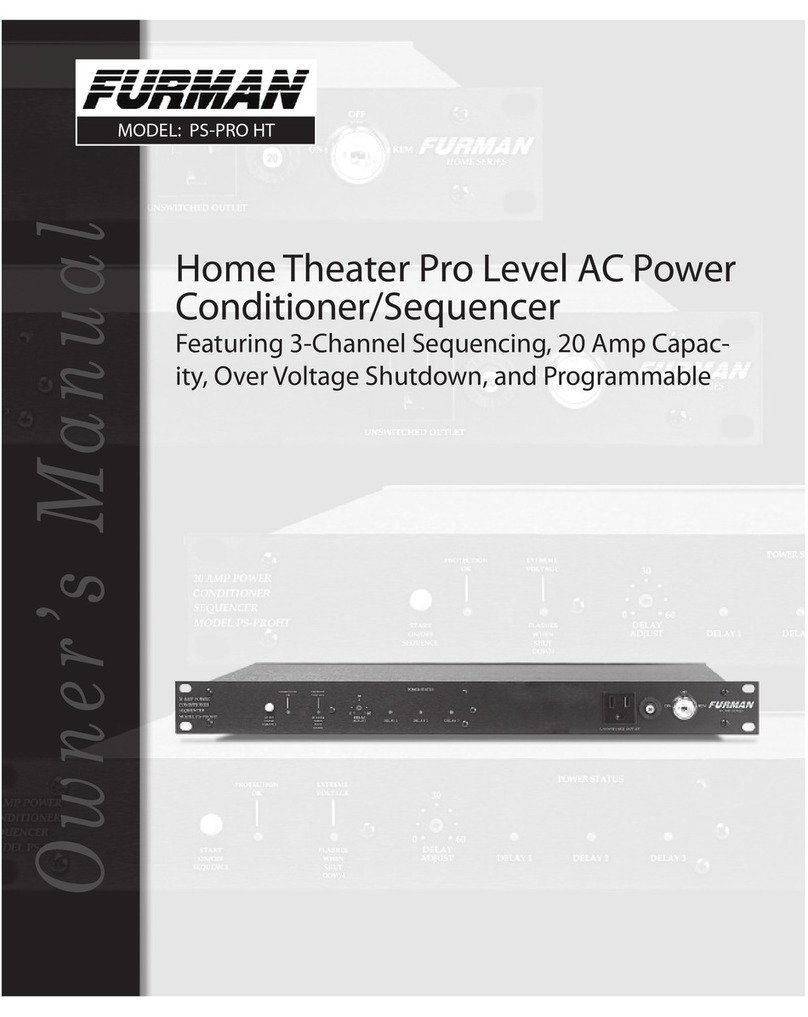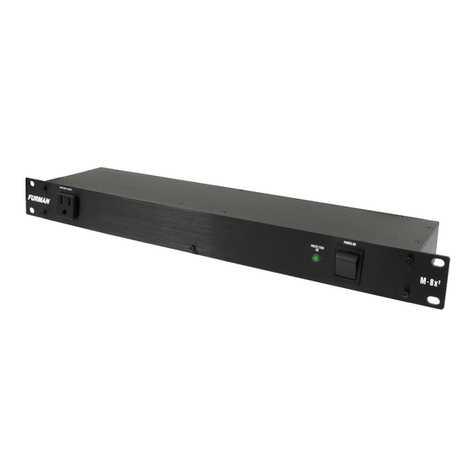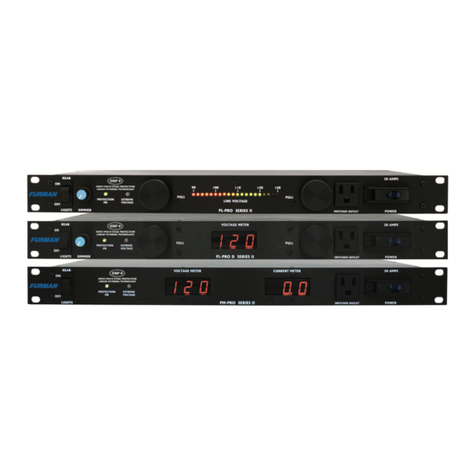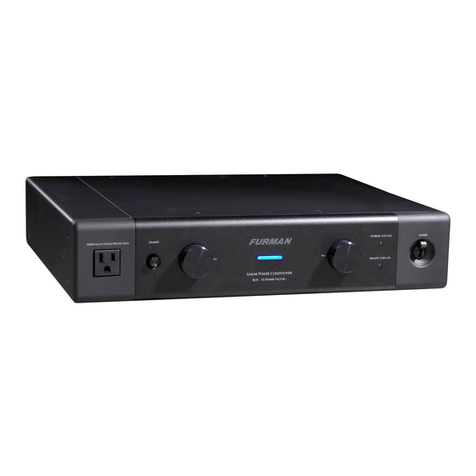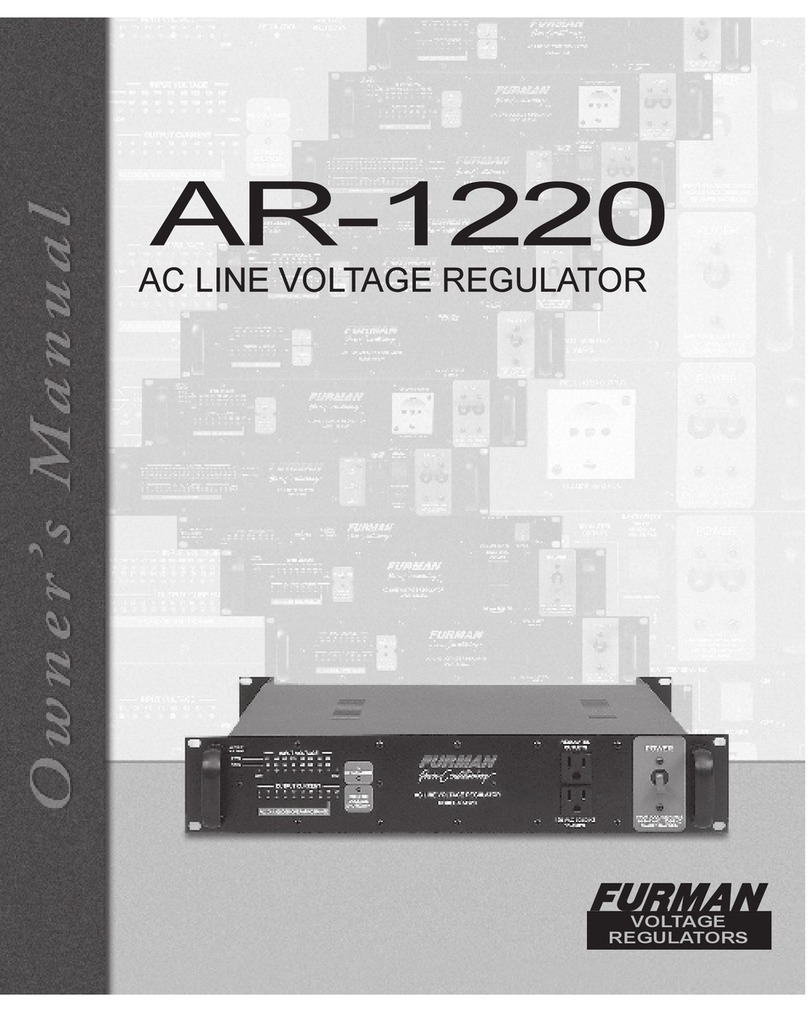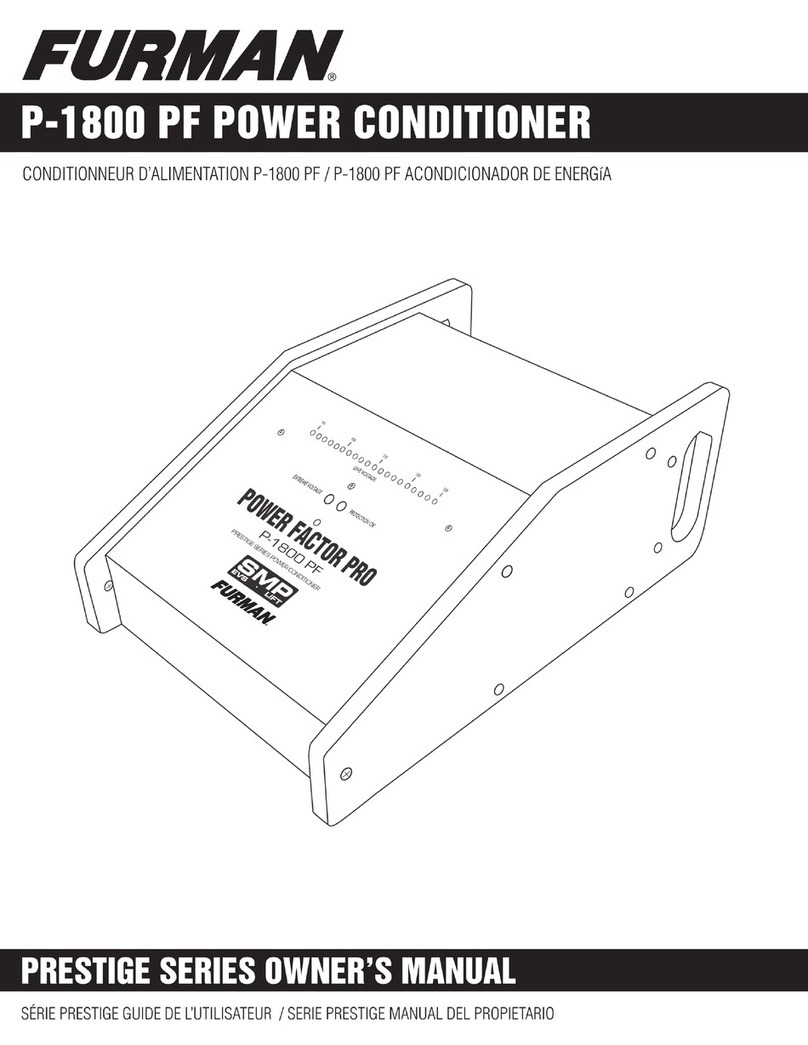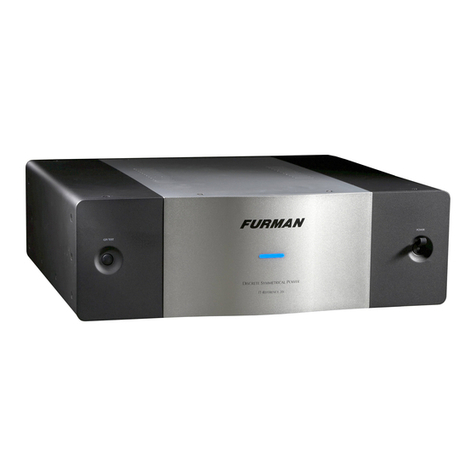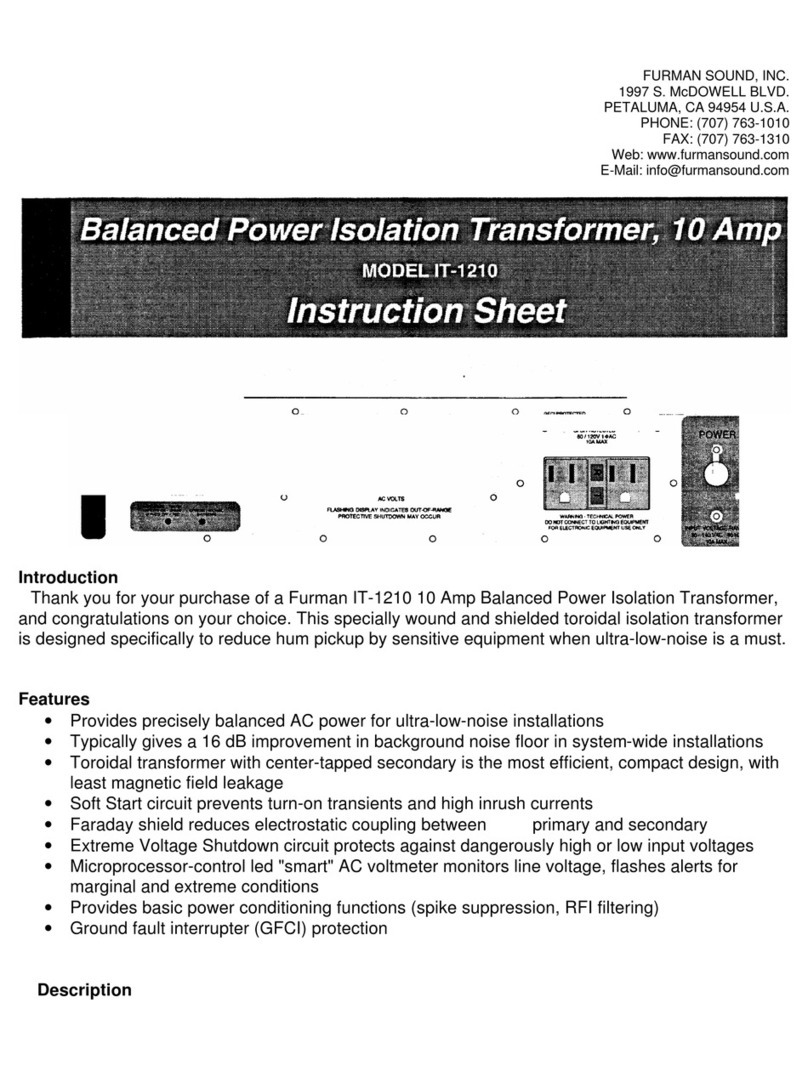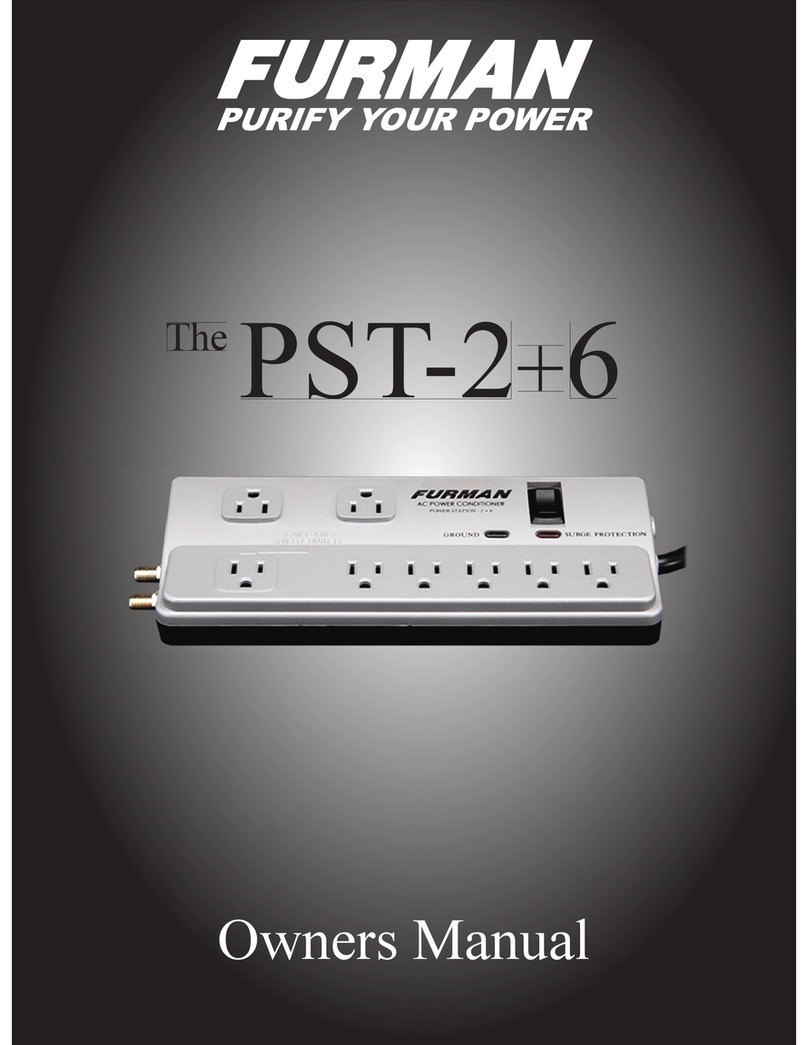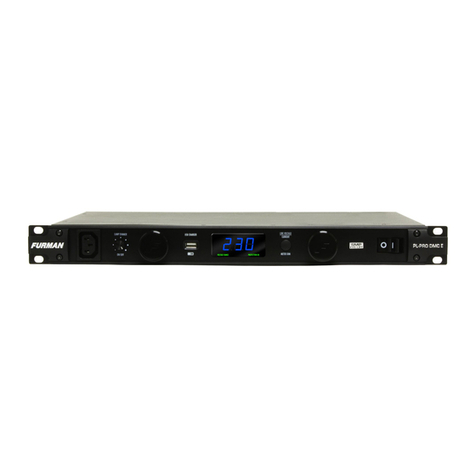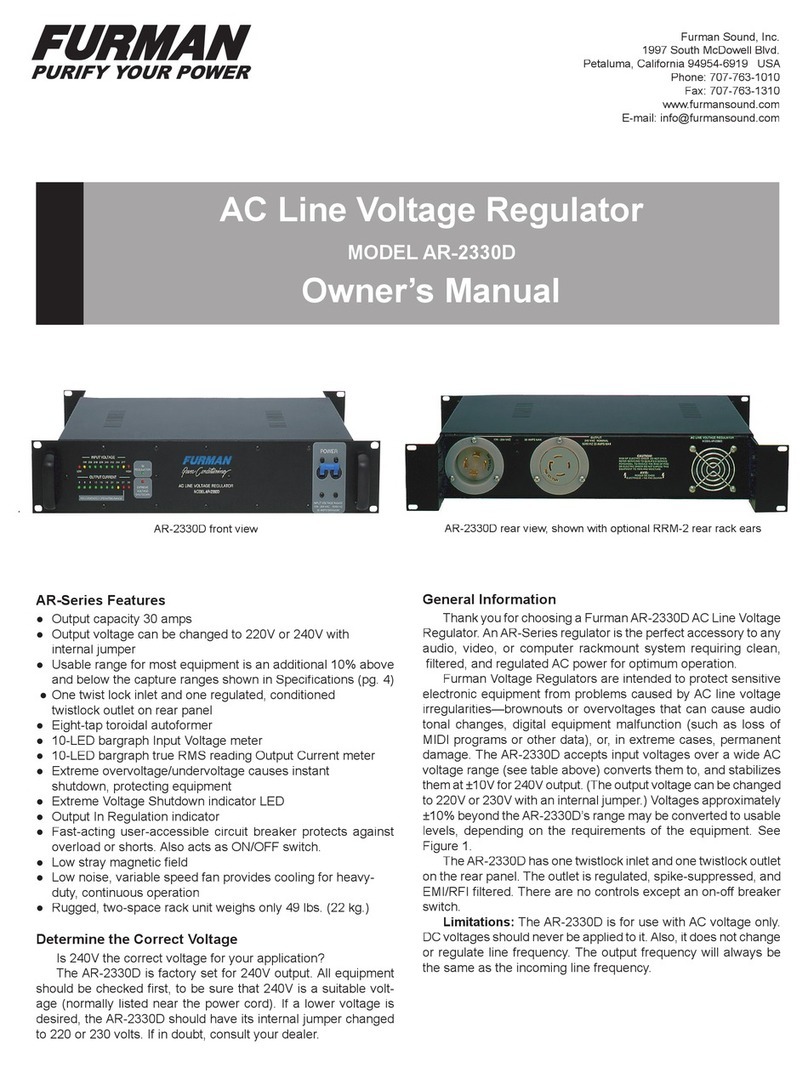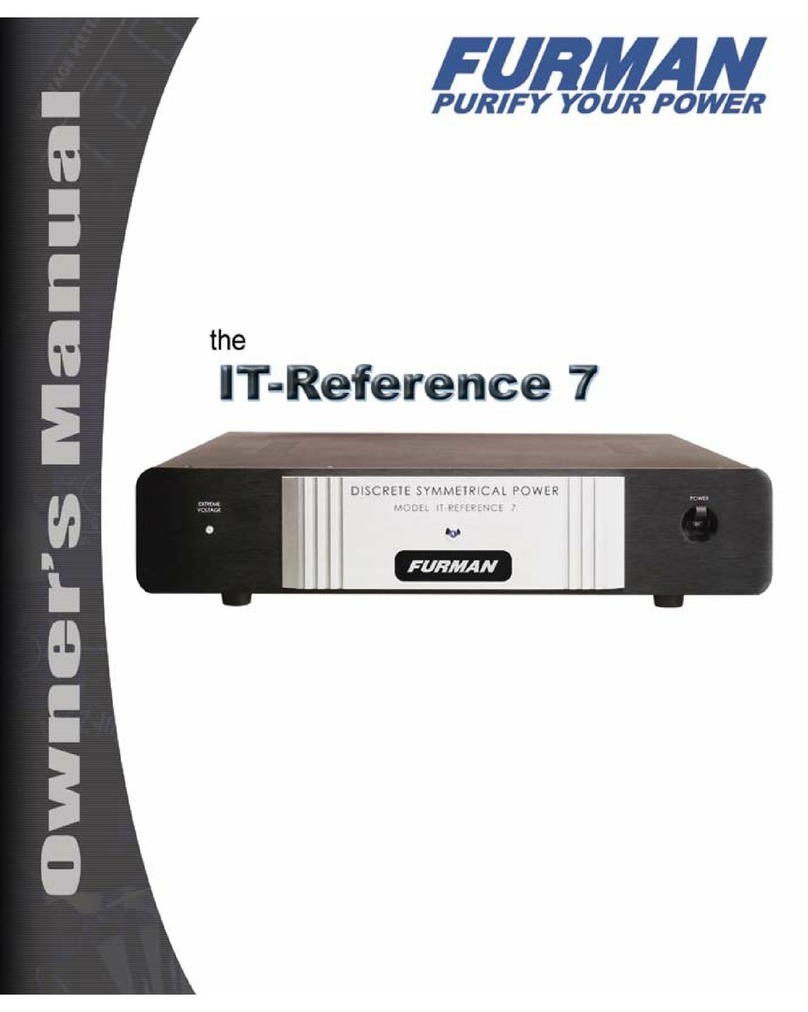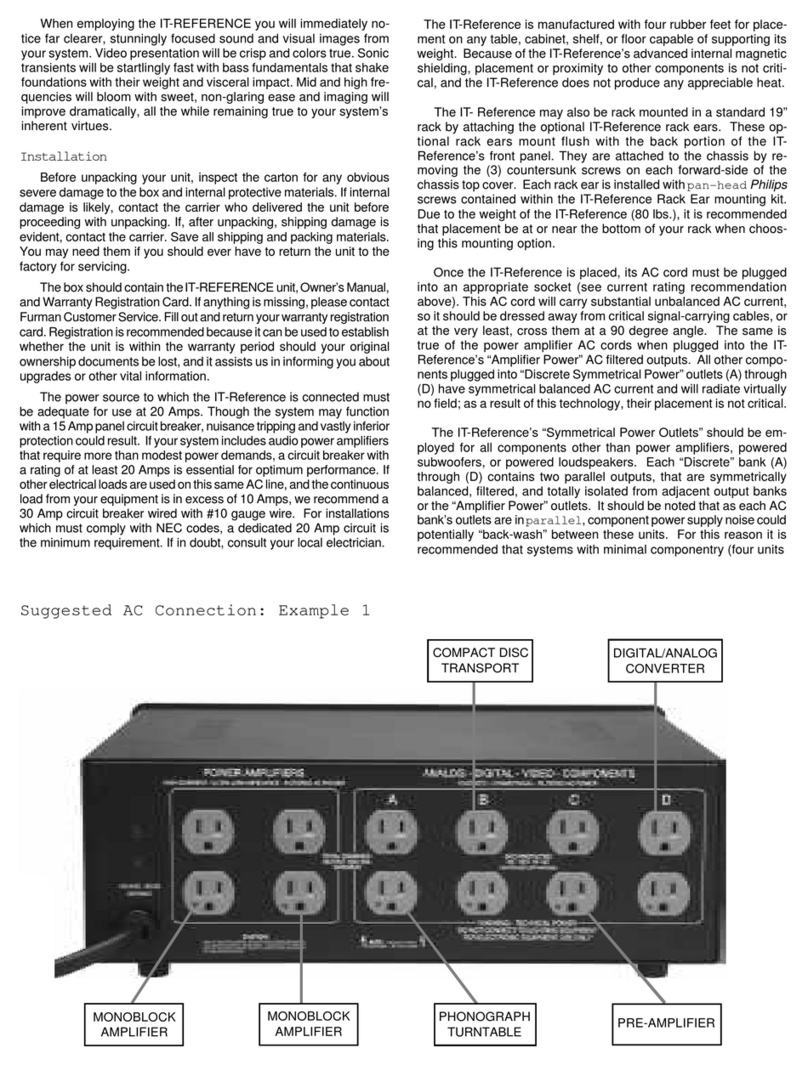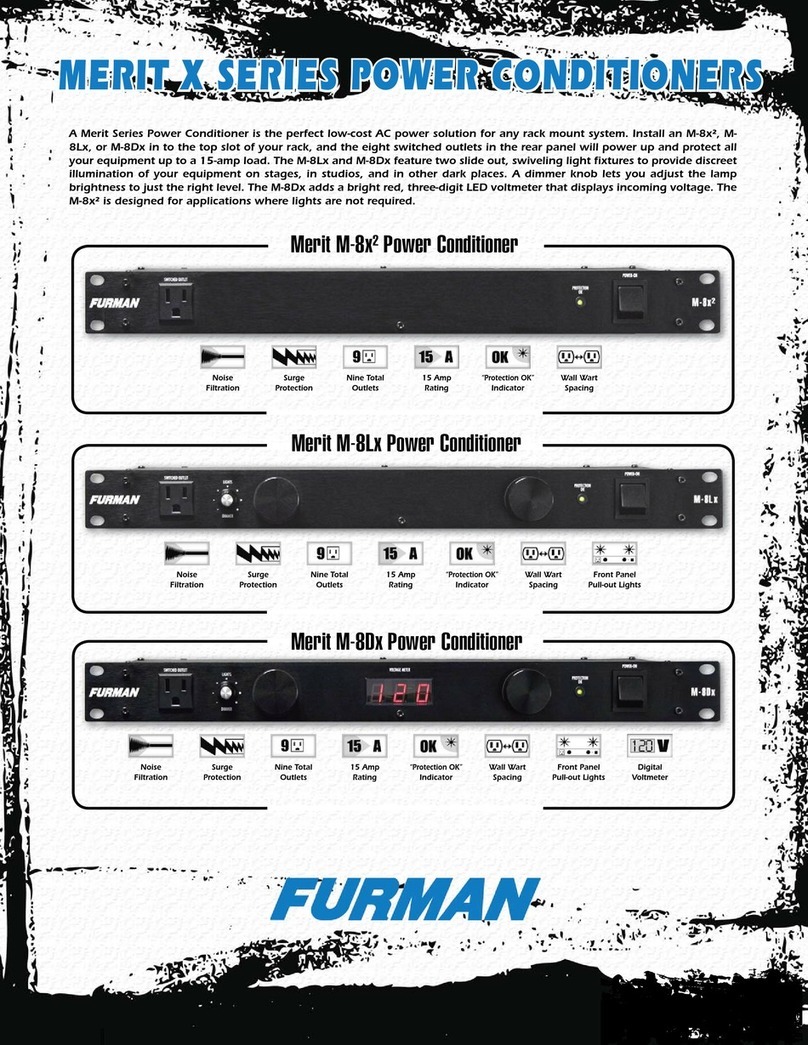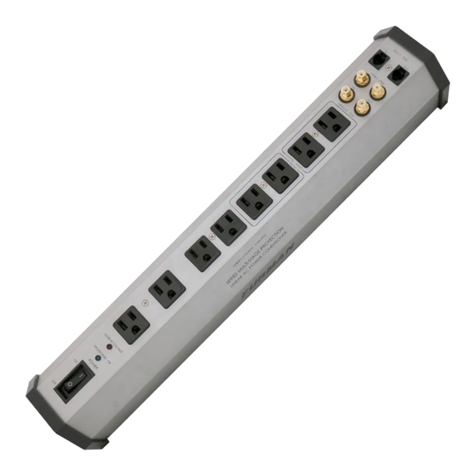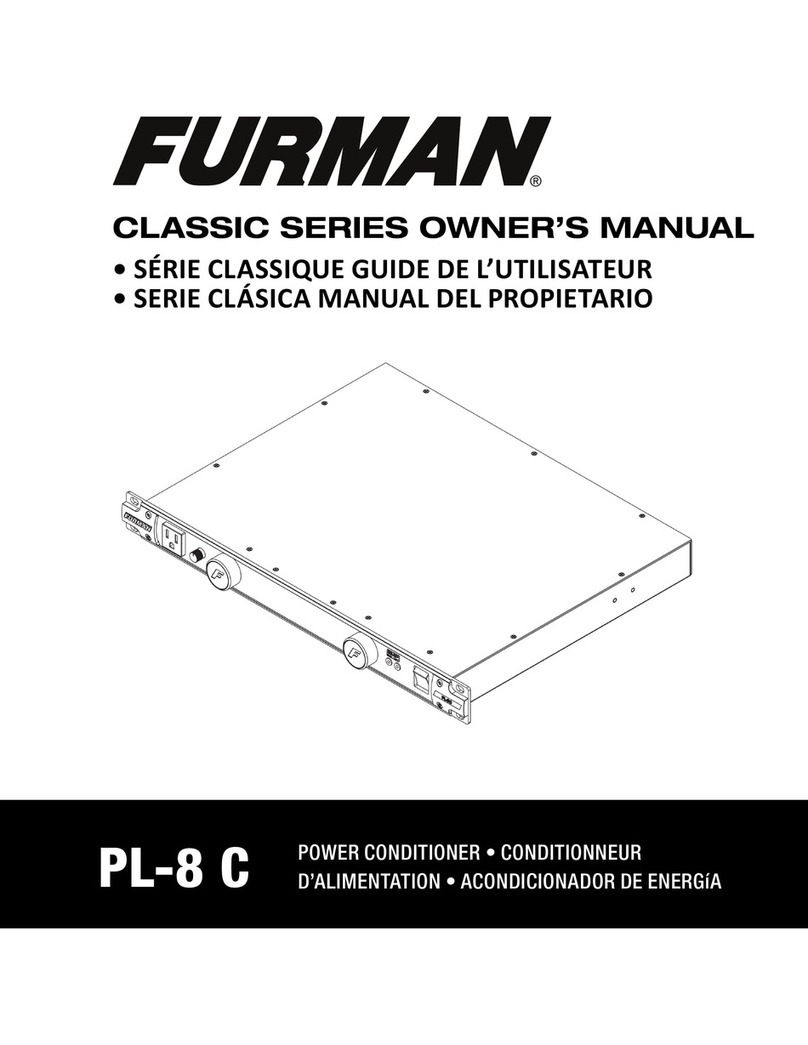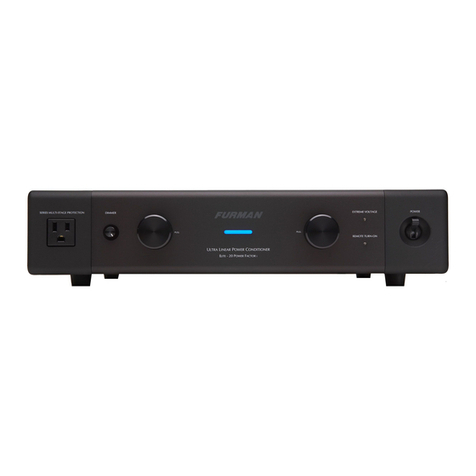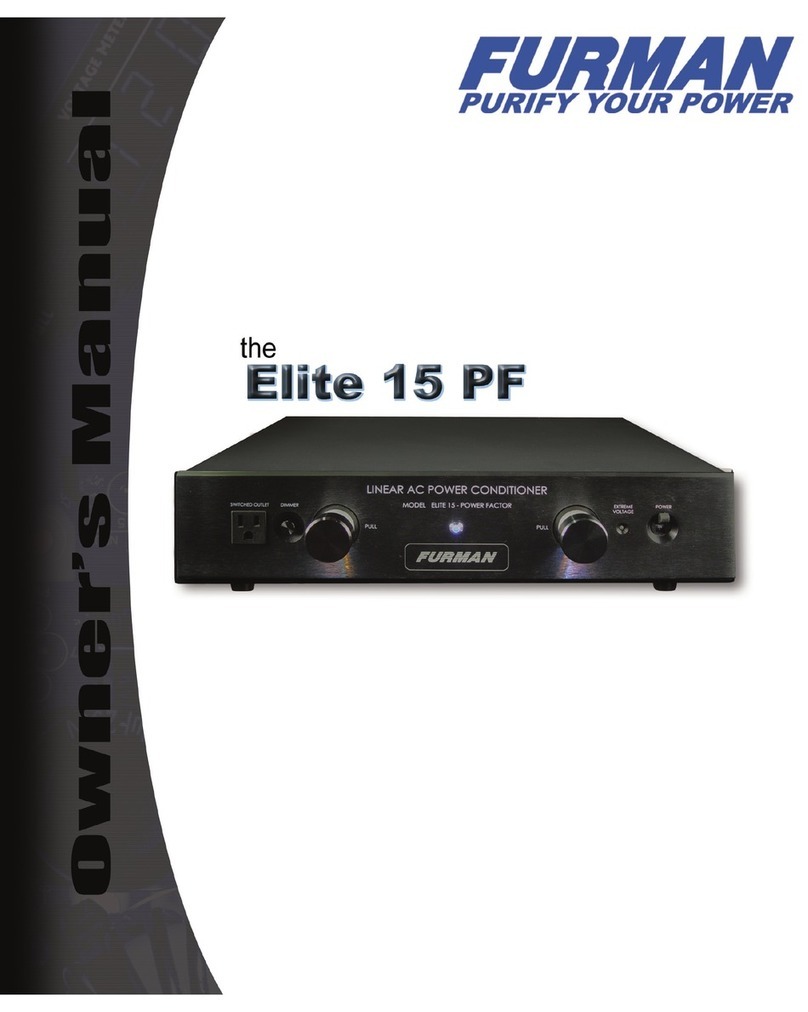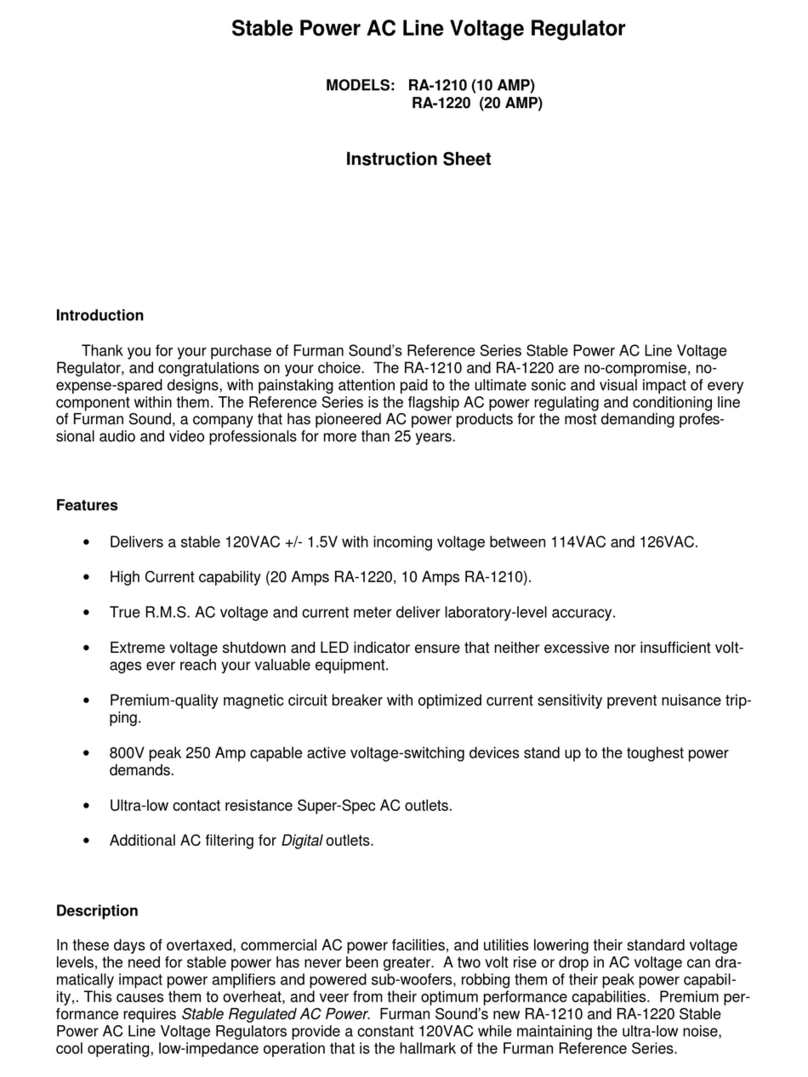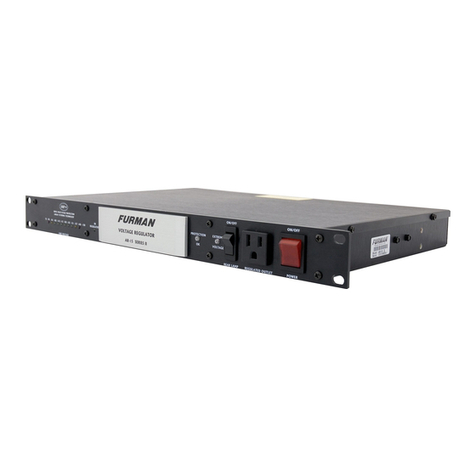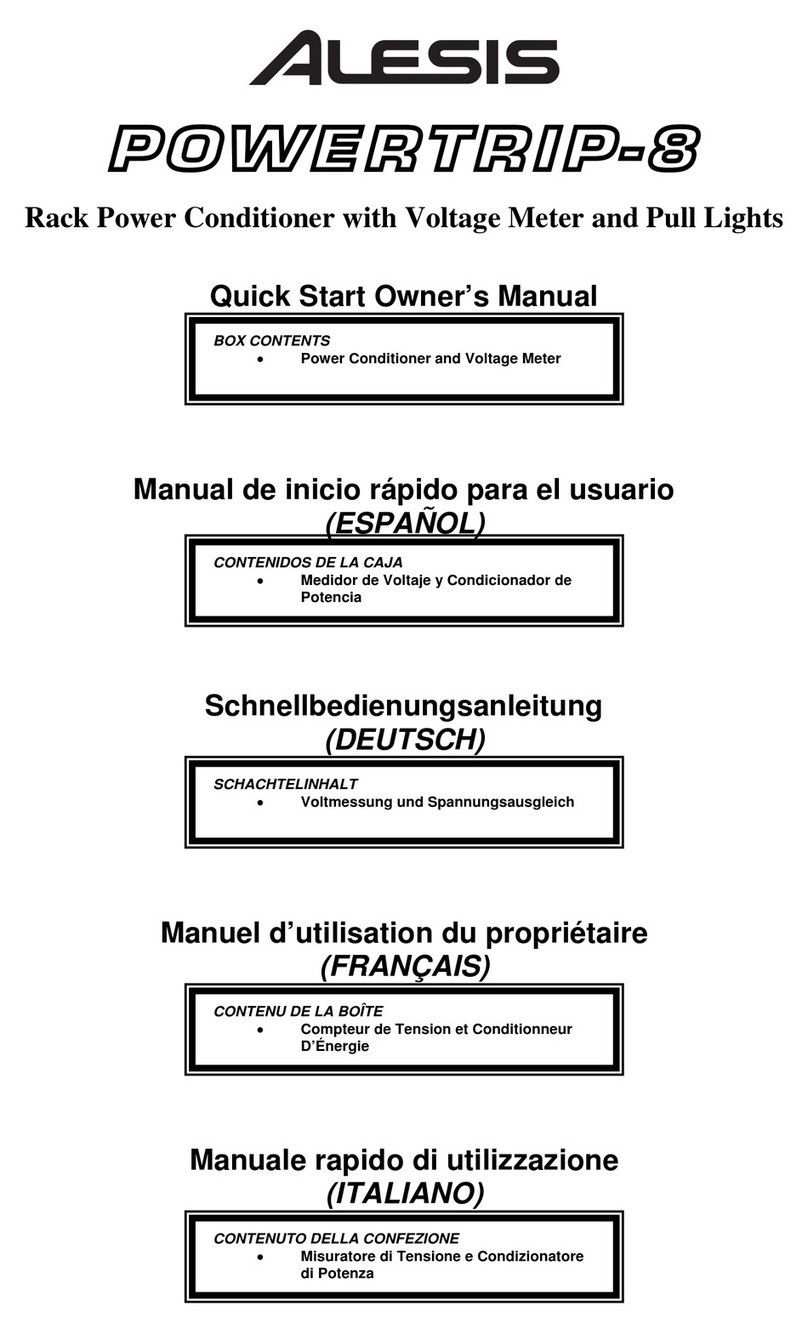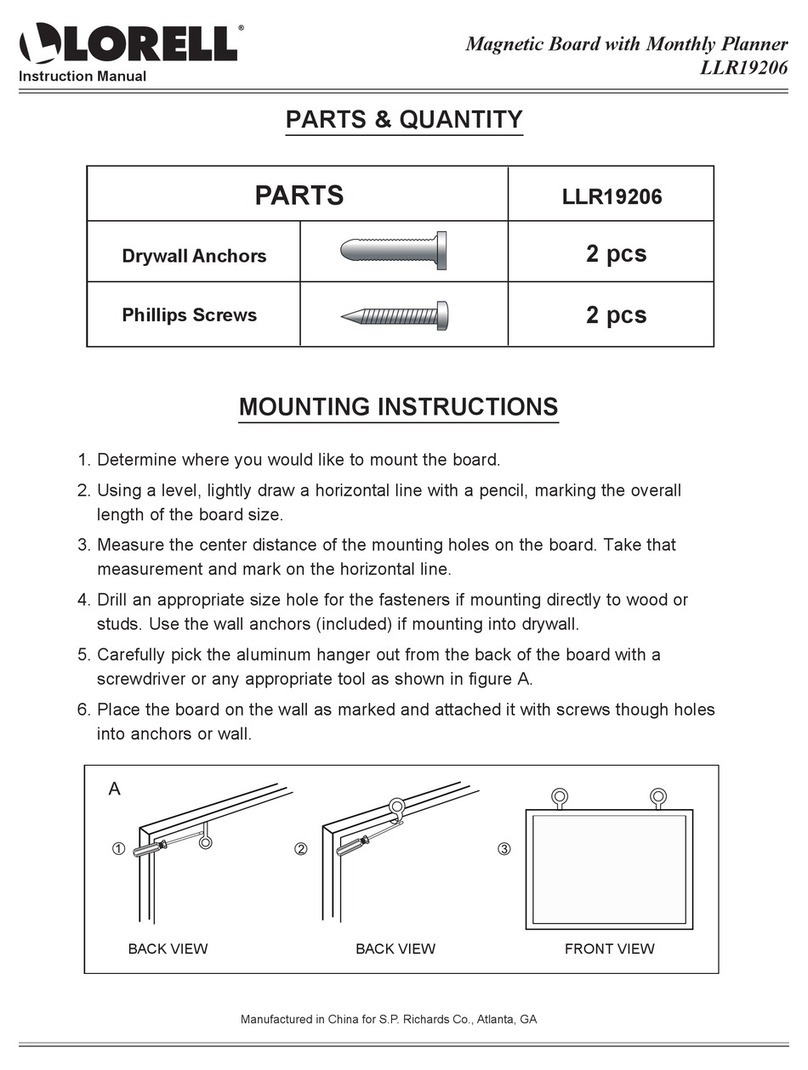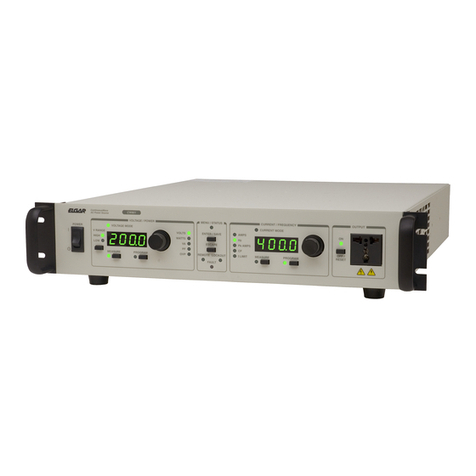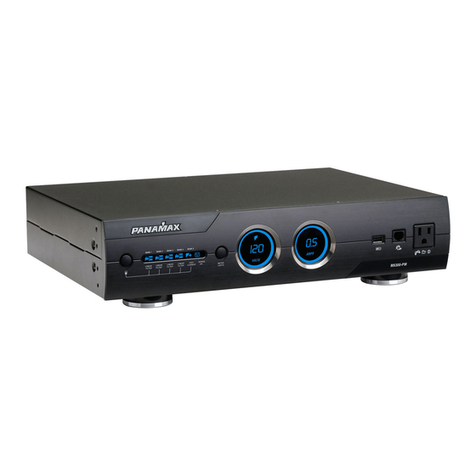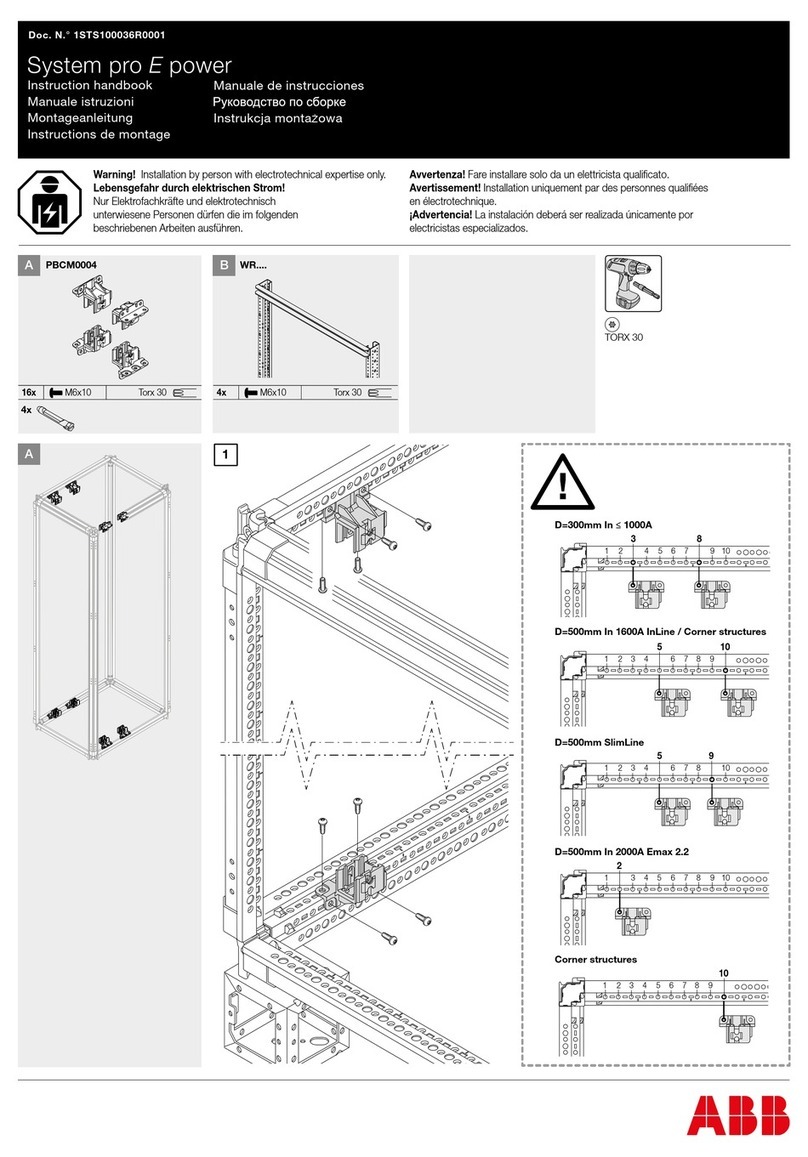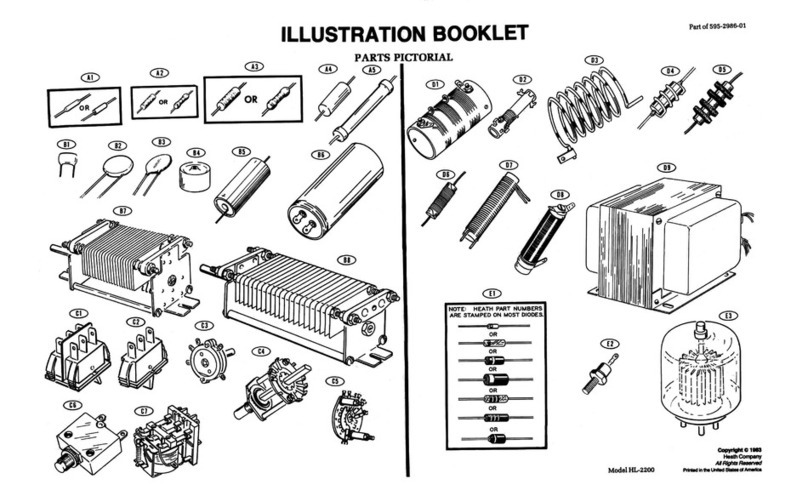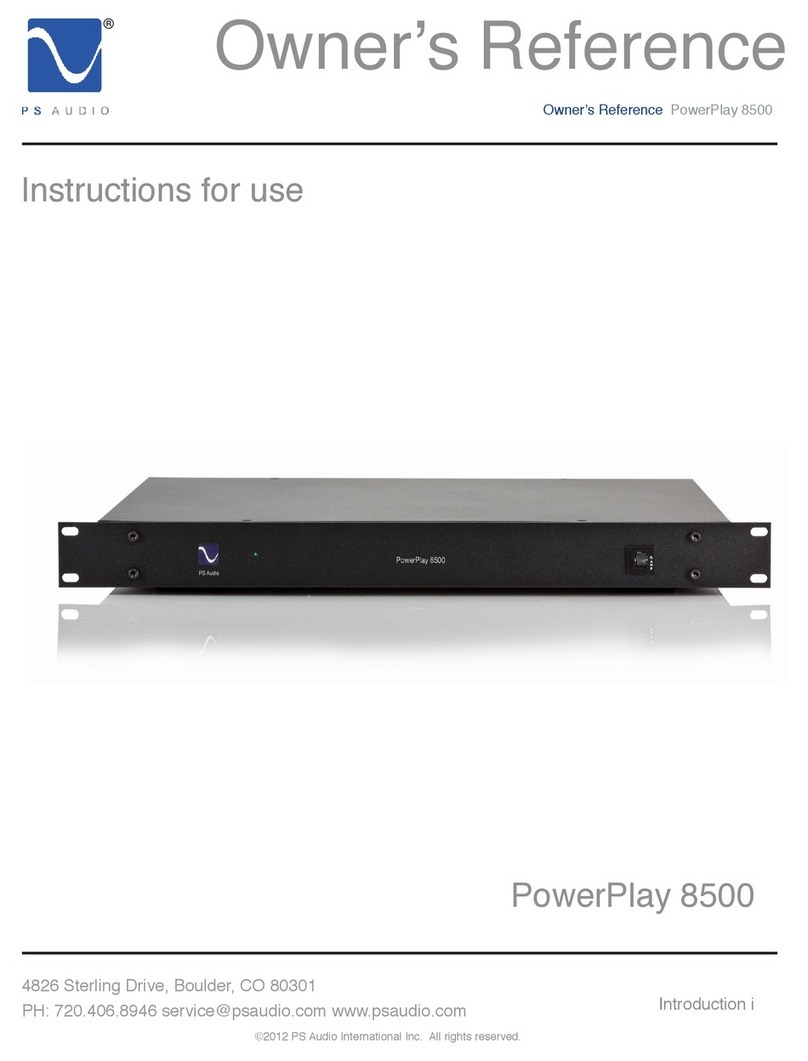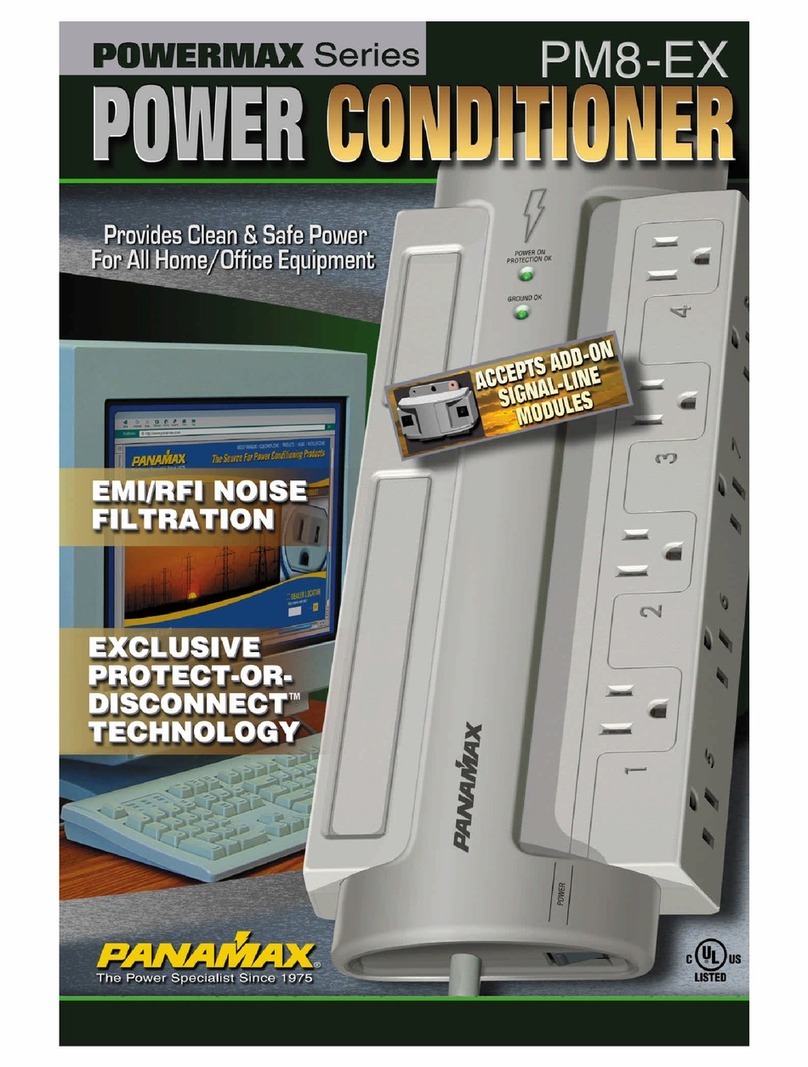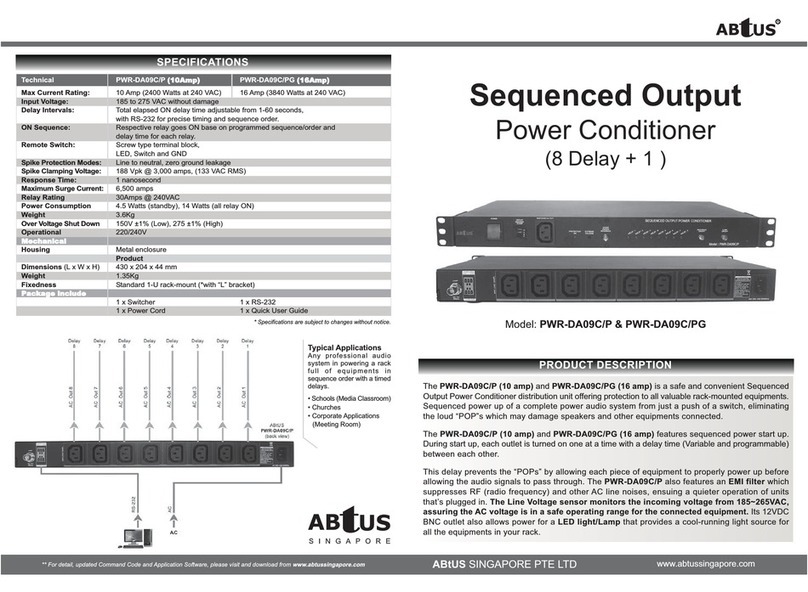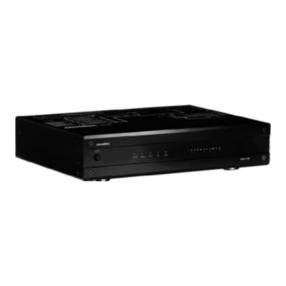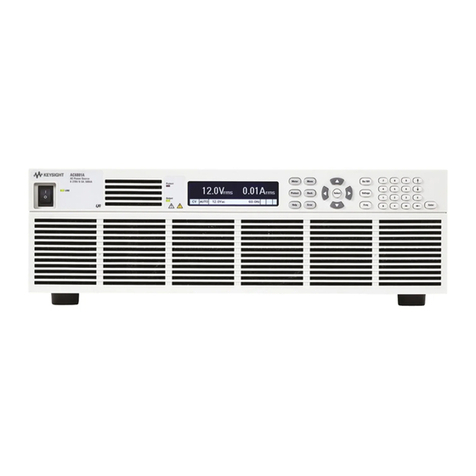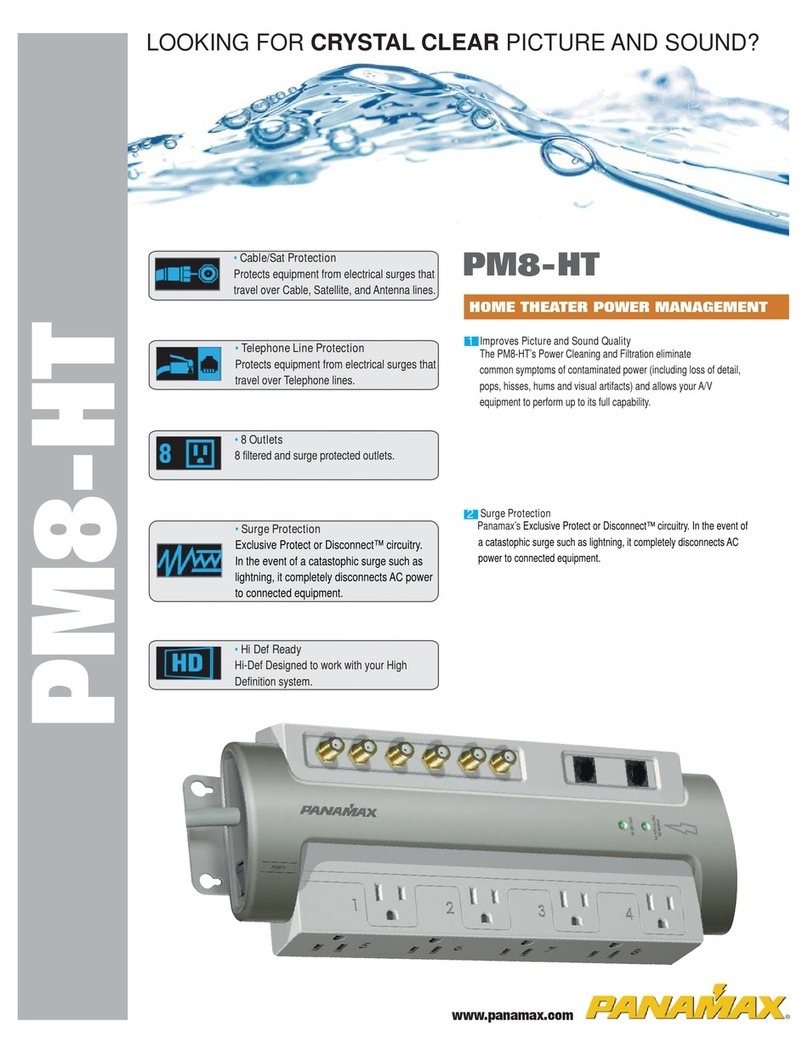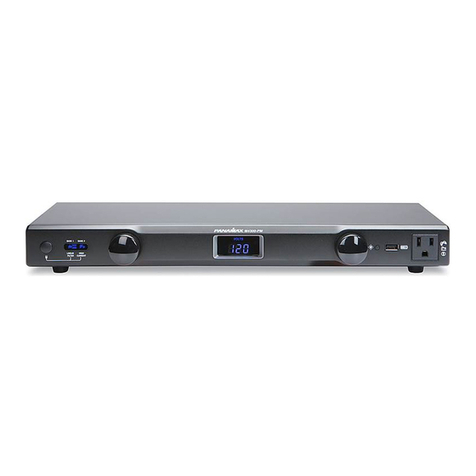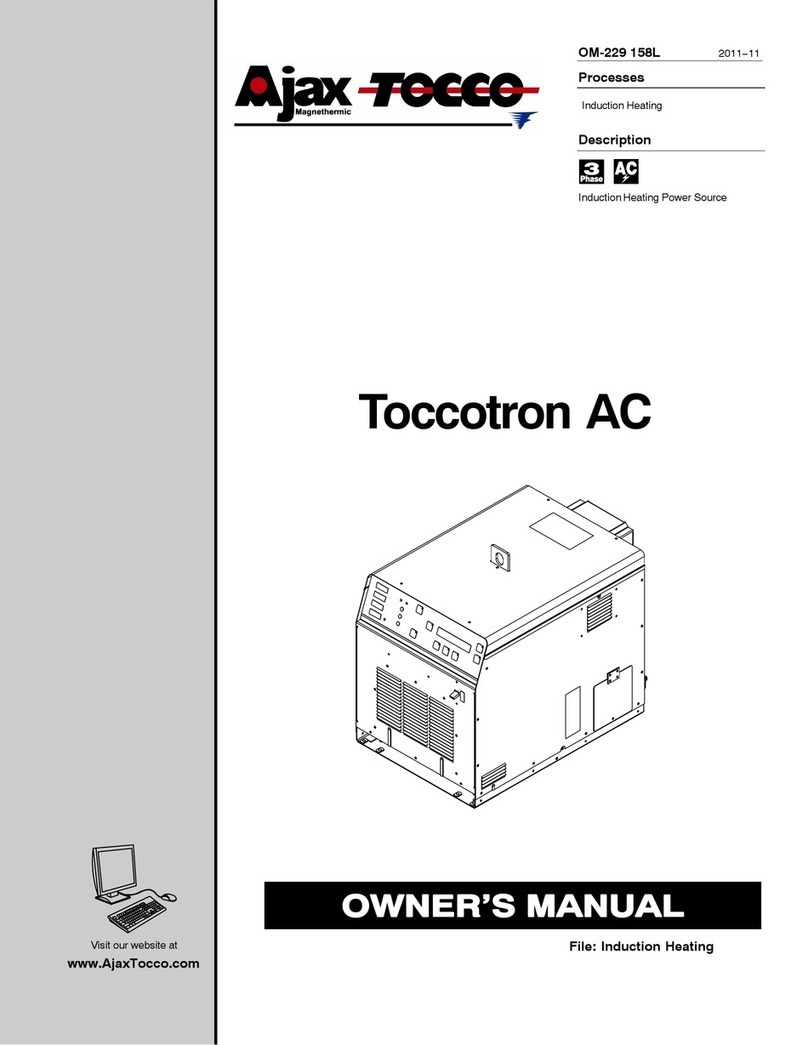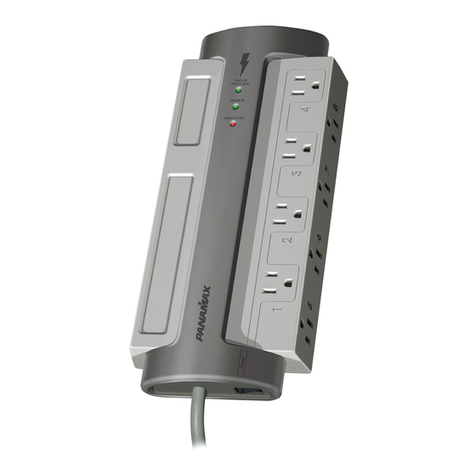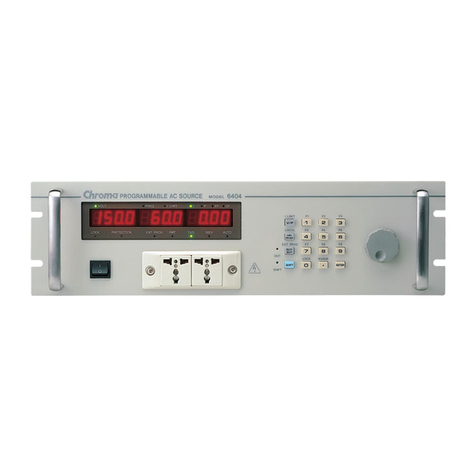to be working normally, but its vital
spike-suppression capability will be
eliminated.)
You should not rely exclusively on the
PL unit for optimum protection against
a direct lightning hit. The rst line of
defense against lightning should be
a lightning arrestor installed on your
building’s electrical service entrance.
If your building does not have one,
contact your local power company or
an electrical contractor to have one
installed.
The PL-8 and PL-PLUS are not
intended to protect against accidental
connection to an improper voltage
supply (such as 220 Volts in North
America or 380 Volts in other areas.)
If such a connection is made, the
PL unit’s MOVs will most likely be
destroyed, which may or may not
provide sufcient time for its circuit
breaker to trip. If it does not trip in
time, it is possible for equipment
downstream to be damaged. In our
experience, such accidents happen
surprisingly often. For complete
protection against this possibility, a
more sophisticated protection device
is needed, such as a Furman PRO
Series Power Conditioner, AR Series
AC Line Voltage Regulators, or
Furman’s SMP products.
DEFINITIONS
SPIKE: This is a pulse of energy on the power
line. Spikes can have voltages as high as
6000 volts. Though they are usually of very
short duration, the energy they contain can
be considerable, enough to damage sensitive
solid-state components in audio and computer
equipment. Spikes can also foul switch contacts
and degrade wiring insulation. They are an
unavoidable component of electric power. They
are caused unpredictably by electric motors
switching on or off (on the premises or outside),
utility company maintenance operations, lightning
strikes and other factors. Spikes (also called
surges or transients) are absorbed by special
components called varistors or MOVs in the PL-8
and PL-PLUS to provide safe voltage levels to
protect your equipment.
RFI/EMI INTERFERENCE: Noise from RFI
(Radio Frequency Interference) or EMI (Electro
Magnetic Interference) involves lower voltages
and less energy than is found in spikes, but it is
continuous rather than transient in nature. It is
not likely to cause damage, but it can certainly be
annoying, producing static in audio circuits, “snow”
on video screens, or garbled data in computers.
Noise can be introduced into AC lines by nearby
radio transmitters, certain kinds of lighting,
electric motors, and other sources. Because
noise occurs at higher frequencies than the 50
or 60 Hz AC line, it can be effectively reduced
through use of low-pass ltering.
